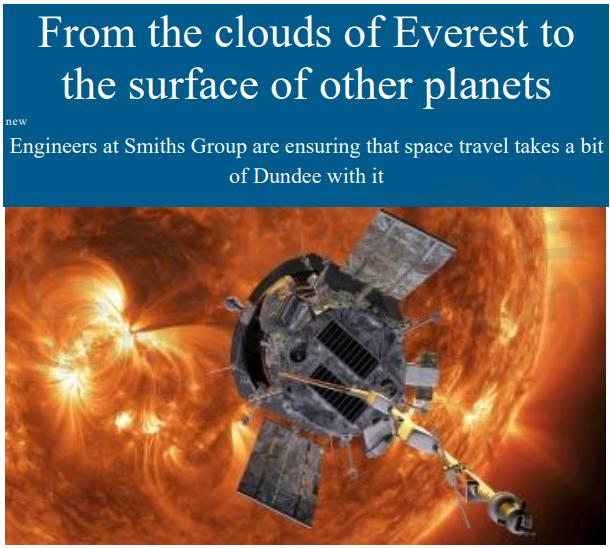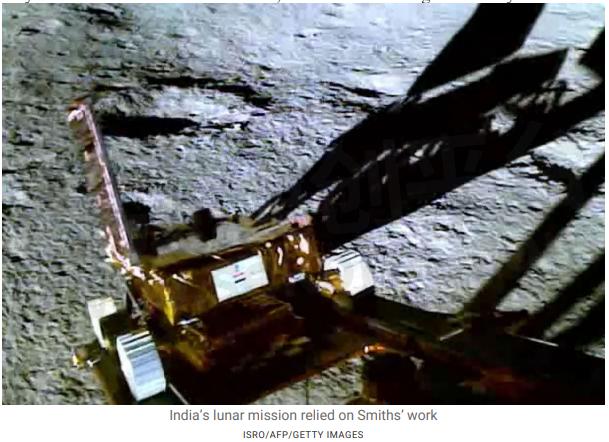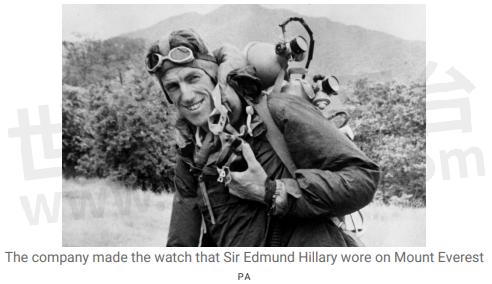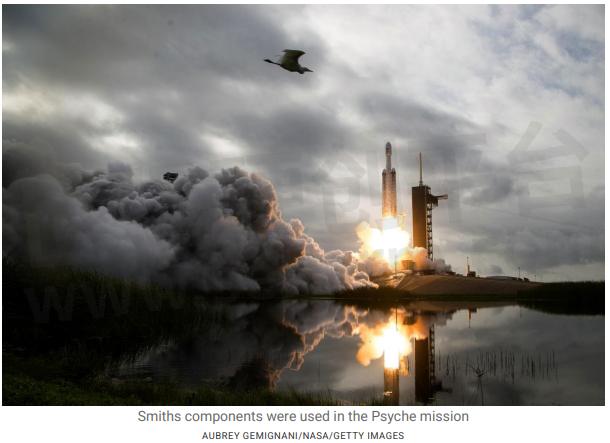From the Clouds of Everest to the Surface of Other Planets, Smiths Kits and Components Are Widely Used

As India celebrated the recent landing of its Chandrayaan-3 mission on the dark side of the moon, Narendra Modi, its prime minister, told his people: “Even the sky is not the limit.” It might not have been Neil Armstrong’s giant leap for mankind but on an industrial estate in Dundee it raised a smile at confirmation of another satisfied customer.

Britain may be at the back of the grid when it comes to the space race — to date its greatest manoeuvre of note is the failed Virgin Orbit mission from Spaceport Cornwall this year — but an outpost on the east coast of Scotland belonging to the FTSE 100 engineer Smiths Group is trying to make sure that every push by the free world towards the final frontier carries a little bit of Dundee with it. Smiths kit is reckoned to be on half of the geostationary satellites orbiting the Earth at present, allowing us to drive by sat-nav, get reasonably accurate weather forecasts, receive 400 television channels, trade financial instruments in milliseconds and shoot first when opponents on the other side of the world converge on your position in Call of Duty. The company’s wares are aboard Copernicus, the European Space Agency (ESA)’s Earth observatory, and it can claim its parts are boldly going where no component has gone before, housed as they are on Nasa’s Parker Solar Probe, which is monitoring the activity of the sun.

At the launch this month of the Psyche mission to explore metal-rich rocks in the asteroid belt between Mars and Jupiter, Smiths Dundee was on board. When Nasa and the ESA launch to Jupiter next year, they will be doing so with components designed, engineered, manufactured, and tested to destruction in the same facility. Industry intelligence indicates that it is working with Elon Musk’s SpaceX, which is ripping up the paradigm of satellite communications, but Smiths says that nondisclosure agreements mean it cannot comment.
The Dundee facility specialises in the radio frequency filters that cut out unwanted interference, and the isolators and circulators that permit the flow of data through transmit and receive modules.
The number of Smiths’ miniature parts can be counted in the thousands on the payloads launched into space. If its components, crucial to communication, do not work then any satellite, any mission is rendered redundant.
It is tempting to see it as a technological extension of what Smiths has to date been most famous for: Sir Edmund Hillary had a Smiths watch on his wrist when he was the first human to get to the top of Mount Everest in 1954. The Dundee plant is part of Smiths Interconnect, one of the four legs of the Smiths engineering conglomerate, though they prefer the term diversified industrial.

It deals in semiconductors, connectors and fibre optics for the defence, medical and industrial sectors — and ever more increasingly, in space, which has grown to become 30 per cent of its business. In Dundee, it is the majority of its work.
“We are not rocket scientists but our customers are,” Alan McNeil, the Smiths Interconnect director, says. “We are on all the European and Indian launches and most of the American and Japanese,” he added, citing big customers such as Airbus, Leonardo, RTX (formerly known as Raytheon), Honeywell, NEC, Mitsubishi and LIG Nex1, the Korean defence company.
While Smiths and its predecessor firms have been specialists in radio frequency and radars for decades, the integrity of the components to get out of the atmosphere and into deep space has come with a multimillion-pound investment in Dundee.
An outsized Thermos flask-cum-pressure cooker, or Thermal Vacuum Chamber, simulates launch conditions of rapid depressurisation and the extremes of the “hard” vacuum found in space while cranking up the temperature to extremes of hot or cold.

Various large and noisy vibrators, a Sine & Random Vibration System, are hugely powerful loudspeaker amplifiers, simulating the rattle and roll of launch conditions that payloads endure. A giant sledgehammer, or Mechanical Shock Response System, replicates the sort of G-force that would kill a human but can be experienced in unmanned spacecraft.
Dundee may not be the obvious location for a key part of the space industry’s global supply chain — but there is always a reason.
The business was originally an offshoot of the Edinburgh-based radar arm of Ferranti, the former FTSE 100 defence electronics group that went bust in 1993. Ferranti had originally chosen Dundee because of the local skills and nimble assembly fingers of a city in which the biggest employers back in the day were Timex the watchmakers and NCR cash registers.
With Ferranti falling apart, its Dundee operation went through a management buyout, was later acquired by an American rival and went through a period in the hands of US private equity before ending up with Smiths which bought the business in 2004.
This outpost of Smiths may be small — 70 people in total, half in design and engineering, half in production — but the business is high-value manufacturing.
Their time, after all the continuing development, increasing miniaturisation to take weight out and testing to destruction, has come.
There were about 7,000 satellite launches in the past ten years. There will be another 8,000 in the next five. Technology is already moving towards supersized satellites, nicknamed death stars, to be assembled in orbit.
Launch costs are halving as insurance rates fall with launches becoming commonplace and a sector in revolution with the advent of Musk’s SpaceX constellations of thousands of small disposable satellites in low Earth orbit to provide internet connection where there is none or communications frail.
“The space market is currently worth between $450 billion and $550 billion and is growing at between 6 per cent and 10 per cent a year,” McNeil says. “It will be worth $1 trillion by 2030. And that is because it is not just governments launching missions but privately funded commercial enterprises too. It is competitive but this is a huge market.”
- +1 Like
- Add to Favorites
Recommend
- What Is the Difference Between Microwave Signal Generator and Radio Frequency Signal Generator?
- What Is the Difference Between Vector Signal Source and Radio Frequency Signal Source?
- Maxwell‘s FM radio planar antenna using FPC flexible medium supports customization, and the frequency covers 87-110MHz
- Taoglas Introduces High-frequency, 5G New Radio mmWave Cable Assemblies, Connectors and Adaptors
- Keysight Helps LG Electronics to Demonstrate 6G Radio Frequency Front-End Module at 2021 Korea Science and Technology Exhibition
- Keysight Introduces Next-Generation Radio Frequency Circuit Simulator for RFIC Chip Designers
- New Regulations for the Use of 2400MHz、5100MHz and 5800MHz Radio Frequency Bands[MIIT]
- Keysight Launches New Design and Simulation Software for Radio Frequency and Microwave Designers
This document is provided by Sekorm Platform for VIP exclusive service. The copyright is owned by Sekorm. Without authorization, any medias, websites or individual are not allowed to reprint. When authorizing the reprint, the link of www.sekorm.com must be indicated.






























































































































































































































































































































































































































































































































































































































































































































































































































